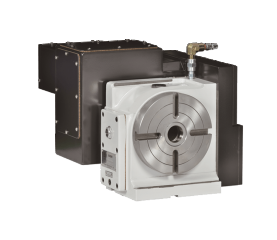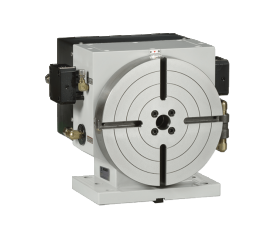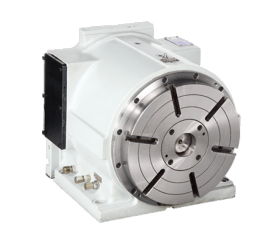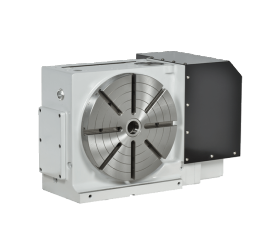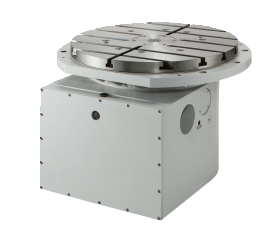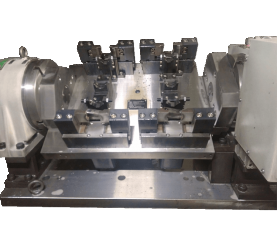Mastering Multiaxis Machining: A Deep Dive into 5th Axis CNC Technology

In the dynamic world of CNC machining, the evolution from traditional three-axis systems to advanced multiaxis configurations has revolutionized manufacturing. The fifth axis in CNC machining represents a significant leap forward, enabling complex and high-precision operations that were once unimaginable. This article aims to educate CNC machine operators, precision manufacturers, and industries focused on high-precision manufacturing about the functionalities, benefits, and setup processes of fifth-axis CNC technology.
Understanding the 5th Axis in CNC Machining
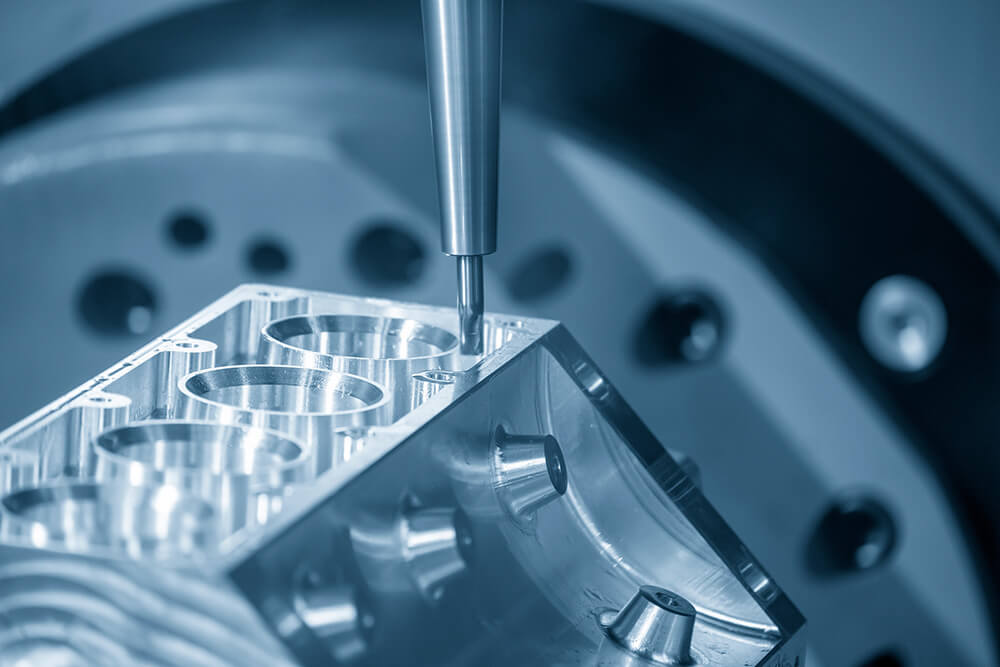
The 5th axis on a CNC machine refers to an additional rotational axis that enhances the capabilities of traditional 3-axis and 4-axis configurations. While the first three axes (X, Y, and Z) cover linear movements along the horizontal, vertical, and depth planes, the 4th axis introduces rotational movement around the X-axis (A-axis), and the 5th axis adds rotational movement around the Y-axis (B-axis).
A 5th-axis rotary table is a critical component that integrates into CNC machines to facilitate these additional movements. The setup typically involves mounting the rotary table onto the machine bed and aligning it accurately with its coordinate system. This integration allows the workpiece to be rotated and tilted, providing access to complex angles and intricate geometries without multiple setups.
The unique movements enabled by the 5th axis include simultaneous rotating and tilting actions, essential for machining complex surfaces and intricate parts. These movements allow the tool to maintain optimal cutting angles, reduce the need for repositioning the workpiece, and enhance overall precision.
Benefits of the 5th Axis Rotary Table
The 5th-axis rotary table offers significant advantages to complex machining operations, enhancing precision, efficiency, and capability. Here’s a detailed look at these benefits:
1.Increased Precision
The 5th-axis rotary table enhances the precision of CNC machining operations significantly. By allowing the workpiece to be approached from multiple angles, it facilitates the execution of complex cuts with high accuracy. This multi-angle approach minimizes the need for manual repositioning, which not only helps in maintaining consistency across operations but also reduces the potential for error. The ability to maintain optimal cutting angles at all times ensures finer details and smoother finishes, which are crucial for precision manufacturing sectors such as aerospace and medical devices, where even minute inaccuracies can lead to significant issues or product failures.
2.Enhanced Efficiency
Integrating a 5th-axis rotary table into machining operations streamlines the entire manufacturing process. Traditional CNC machines might require multiple setups and repositioning to achieve the same results, which consumes considerable time and labor. However, with the 5th axis, these additional setups are greatly reduced if not completely eliminated. This reduction in setups translates directly into faster production times, allowing for more parts to be produced in a shorter period. Furthermore, by reducing the labor involved in manual repositioning and setup changes, overall operational costs are lowered, increasing productivity and efficiency in the manufacturing process.
3.Expanded Capabilities
The addition of a 5th axis opens up a new realm of possibilities for creating complex geometries and intricate features that are impossible with traditional 3-axis or even 4-axis machines. The extra degree of freedom allows for the machining of complex parts in a single setup without the need for additional fixtures or special tooling, which can be both cost-prohibitive and time-consuming. This capability is particularly valuable in industries that require highly complex parts such as the aerospace, automotive, and medical sectors. The ability to efficiently produce these complex shapes and intricate designs not only enhances the capability of the machines but also expands the potential market and applications for manufacturers.
Applications of the 5th Axis Rotary Table in Modern Manufacturing
The 5th-axis rotary table is extensively used in various industries due to its ability to produce complex and precision parts efficiently.
- Aerospace Industry
- The aerospace industry relies on the 5th-axis rotary table for machining complex components like turbine blades, engine mounts, and structural brackets, requiring precise multi-angle cuts to meet stringent quality standards.
- Automotive Sector
- In automotive manufacturing, the 5th-axis rotary table facilitates the production of intricate components such as gearbox parts and engine elements. These parts often require complex designs that improve vehicle performance and fuel efficiency.
- Medical Device Manufacturing
- This sector benefits immensely from the precision of the 5th-axis rotary table, crucial for fabricating medical implants, surgical instruments, and diagnostic equipment with tight tolerances and complex geometries.
- Electronics and Semiconductor Industries
- The electronics industry uses the 5th-axis rotary table for the precise machining of small and intricate components like connectors and enclosures, which are essential for electronic devices and semiconductors.
- Tool and Die Making
- Tool and die makers utilize the 5th-axis rotary table to streamline the creation of complex tooling components, improving the quality of molds and dies while reducing production lead times.
- Art and Sculpture
- Artists and designers leverage the advanced capabilities of the 5th-axis rotary table to create intricate sculptures and artistic pieces, enabling the realization of unique designs and forms that were previously challenging to achieve.
How to Set Up and Indicate the 4th and 5th Axis on a CNC Machine
Setting up the 4th and 5th axes involves several critical steps:
- Mount the Rotary Table:
Secure the 5th-axis rotary table onto the machine bed, ensuring it is firmly attached. - Align the Axes:
Use precise alignment tools to ensure the rotary table is aligned with the machine's coordinate system. This step is crucial for maintaining precision during machining operations. - Calibrate the System:
Perform calibration routines to synchronize the movements of the 4th and 5th axes with the machine's control system. This involves setting reference points and verifying the accuracy of movements.
To ensure optimal performance, use the following techniques and tools for indicating the 4th and 5th axes:
- Dial Indicators:
Utilize dial indicators to measure and adjust the alignment of the rotary table with the machine bed. - Calibration Fixtures:
Employ calibration fixtures that help set precise reference points for the 4th and 5th axes. - Software Tools:
Leverage CNC tools that offer alignment and calibration routines to automate parts of the setup process, ensuring higher accuracy and consistency.
Common Challenges and Troubleshooting
Operators may encounter challenges such as misalignment or calibration errors despite careful setup. Here are some common challenges and troubleshooting tips:
- Misalignment:
Ensure the rotary table is aligned with the machine's coordinate system. Recheck alignment using dial indicators and calibration fixtures. - Calibration Errors:
If calibration routines fail, re-run the procedures and verify the accuracy of the reference points. Ensure that the machine's control software is up-to-date and properly configured. - Vibration Issues:
Excessive vibrations can affect precision. Check the mounting of the rotary table and ensure it is securely fastened. If necessary, use vibration-damping materials.
Elevate Your Production with Advanced 5th-Axis CNC Technology
Adopting 5th-axis CNC technology is crucial for manufacturers aiming to meet the demands of complex and precision-oriented manufacturing. The ability to machine intricate geometries and maintain high precision and efficiency makes the 5th-axis rotary table an invaluable tool in modern manufacturing.
To truly understand the transformative impact of this technology, manufacturers should consider integrating advanced 5th-axis technology into their operations. For a detailed consultation or demonstration of the benefits and operation of 5th-axis CNC machines, we invite you to take the next step: Connect with Our Experts.
Embrace the advanced capabilities of 5th-axis CNC technology to enhance your machining capabilities and ensure your manufacturing processes remain competitive in an increasingly precision-driven market. Visit our contact page today and see how our solutions can be tailored to your specific manufacturing needs.



